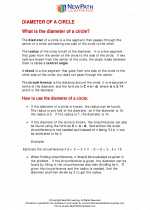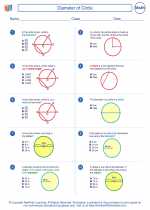Hexahedron
A hexahedron is a three-dimensional geometric shape that has six faces, twelve edges, and eight vertices. The term "hexahedron" is derived from the Greek words "hexa" meaning "six" and "hedron" meaning "base" or "seat".
There are different types of hexahedrons, including cubes, rectangular prisms, and square parallelepipeds. The most common and well-known hexahedron is the cube, which has six square faces, twelve edges of equal length, and eight vertices. Rectangular prisms have rectangular faces, while square parallelepipeds have parallelogram faces.
Properties of a Hexahedron:
- Number of Faces: 6
- Number of Edges: 12
- Number of Vertices: 8
- Types: Cube, Rectangular Prism, Square Parallelepiped, etc.
Formulas for a Cube (a specific type of hexahedron):
Let's consider a cube as an example of a hexahedron. The following are some important formulas related to a cube:
- Surface Area of a Cube: A = 6a2 (where 'a' is the length of the side of the cube)
- Volume of a Cube: V = a3 (where 'a' is the length of the side of the cube)
- Diagonal of a Cube: d = a√3 (where 'a' is the length of the side of the cube)
Study Guide:
When studying hexahedrons, it's important to understand the concept of faces, edges, and vertices. Practice identifying the different types of hexahedrons and their properties, such as the number of faces, edges, and vertices. Additionally, familiarize yourself with the formulas for calculating the surface area, volume, and diagonal of a cube.
Here are some suggested study activities:
- Draw and label the faces, edges, and vertices of a cube, rectangular prism, and square parallelepiped.
- Calculate the surface area and volume of different types of hexahedrons using the appropriate formulas.
- Solve word problems involving hexahedrons to understand their real-life applications.
- Explore the concept of nets and how they can be used to represent the faces of a hexahedron.
By understanding the properties and formulas related to hexahedrons, you will build a strong foundation in three-dimensional geometry and be better prepared to tackle more advanced topics in mathematics.
.◂Math Worksheets and Study Guides Sixth Grade. Diameter of Circle

 Worksheet/Answer key
Worksheet/Answer key
 Worksheet/Answer key
Worksheet/Answer key
 Worksheet/Answer key
Worksheet/Answer key
